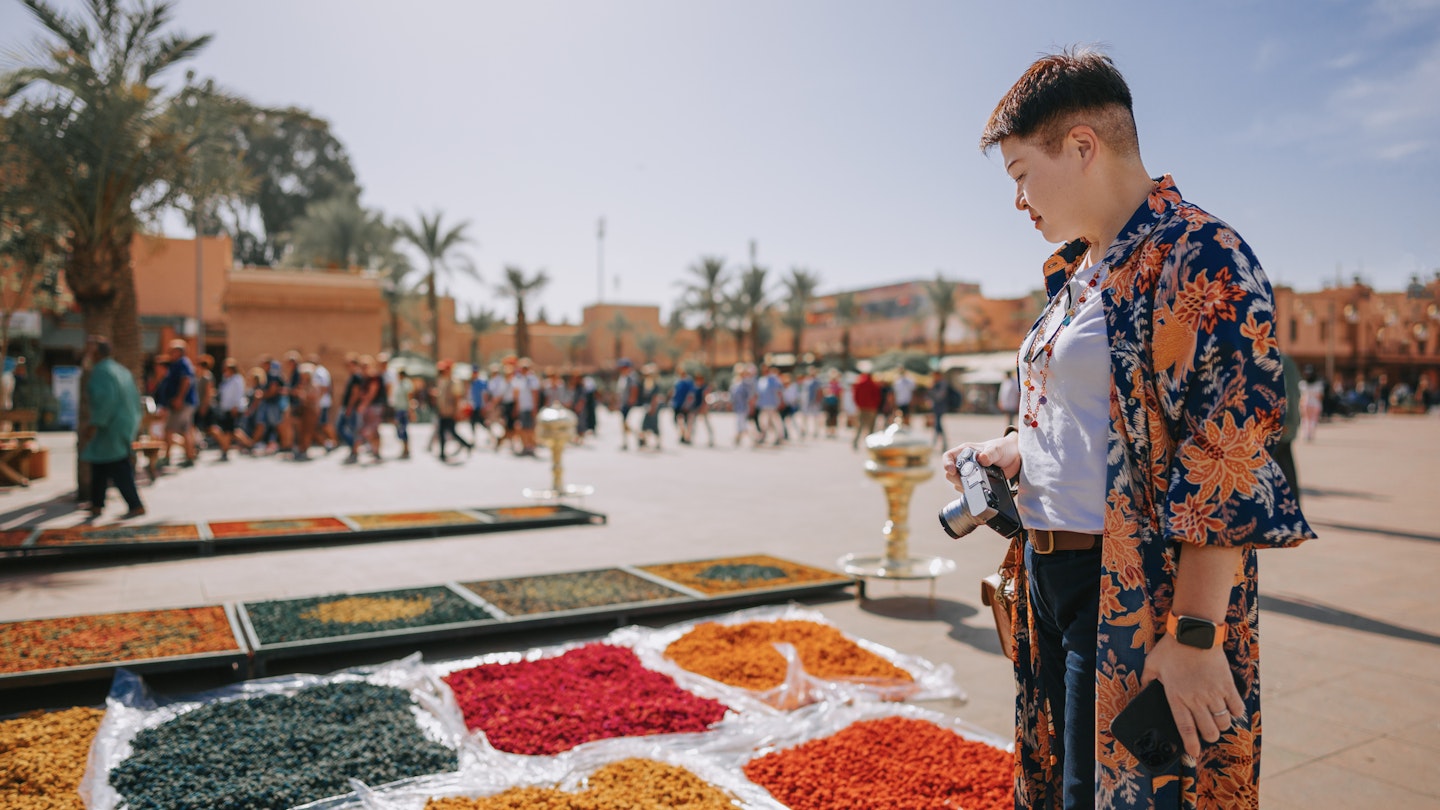Summary

As Morocco’s premier tourist destination, Marrakesh attracts visitors eager to appreciate the elegance of its palaces, navigate its captivating alleyways, and acquire artisanal products in the souks.
The city is typically bustling with tourists during its high seasons in spring and autumn, as well as during the Christmas and New Year celebrations. Interestingly, despite the intense heat experienced in the summer months—especially in July and August—the city is increasingly perceived as a favorable year-round destination.
Visiting during off-peak months, particularly in January and November, not only presents an opportunity to enjoy some winter sun but also increases the availability of accommodations while reducing the presence of crowds at the city’s main attractions.
Whether traveling for cultural experiences, local festivals, or unique shopping opportunities, these periods provide the optimal times to experience Marrakesh.

High Season: March to May and September to October
Temperatures, particularly at night, generally rise from early March, signifying the onset of evenings that can be enjoyed on rooftop dining terraces, complemented by the aroma of flowering orange blossoms in courtyards. By May, while exploring the art galleries and architectural sites of Gueliz, keep an eye out for vibrant jacaranda trees that adorn the main boulevards.
The Easter period witnesses a surge in visitors, necessitating a general itinerary to avoid disappointment, particularly at the Majorelle Gardens, where pre-arranged timed-ticket entry is essential.
In June, as the heat escalates with temperatures reaching approximately 45ºC (113ºF), the snowcapped Atlas Mountains, visible from the medina’s rooftop terraces, beckon travelers seeking cooler conditions (averaging 10ºC/50ºF) and refreshing mountain air.
A lively atmosphere envelops the city in early autumn as residents return to a vibrant pace post-summer, galleries unveil new exhibitions during vernissages, and visitors are drawn back, especially during the European half-term holidays. It is advisable to arrange accommodations, guides, and dining reservations well in advance of arrival.

Best Time for Nightlife: Late December
Marrakesh buzzes with energy from around December 20 through the first week of January, as visitors select Morocco to welcome in the New Year. Those heading to the Red City during this period should anticipate a minimum stay of five nights at many accommodations. Days can be filled with exploration of the medina, undertaking day trips to the Atlas Mountains or Agafay Desert, and visiting galleries in Gueliz.
Recognized for its vibrant nightlife, chic restaurants, and trendy bars located in the Gueliz and Hivernage areas, many Moroccans from across the country flock to Marrakesh to celebrate the New Year. A night out may have costs exceeding those in London or New York; however, it typically includes dinner and engaging entertainment, with attendees dressed to impress.
As the city pulses with vitality at this time, it is crucial to secure restaurant and excursion reservations in advance, as last-minute availability is unlikely.

Best for Poolside Lounging: June to August
Although typical tourists may be fewer in June to August, Marrakesh welcomes a different demographic—Moroccans residing abroad (known locally as MRE) who return home during the summer holidays. Wedding festivities are also prevalent at this time.
These months offer favorable deals on riads and hotels. Riads featuring a pool, even a small plunge pool, and air-conditioning are highly recommended for summer stays. The hotels and resorts in the Palmeraie area are ideal for relaxation by the pool as the sun blazes.
If exploring the medina or Gueliz during this season, it is wise to venture out early and return to the pool during peak heat hours. Day trips to the Atlas Mountains offer an excellent means of escaping the heat. Note that some restaurants catering to foreign visitors may close for summer holidays during this time.
As the day winds down, Marrakesh’s nightlife becomes lively. Luxury cars, stylish party-goers, and friends gathering in street-side restaurants until the early morning hours contribute to a unique cultural atmosphere.

Events and Activities: January to February and November to December
These months are classified as shoulder season, when Marrakesh typically experiences its highest rainfall, which may disrupt exploration plans. However, precipitation usually lasts for only a day or two, providing excellent opportunities to visit a hammam for warmth and cleansing.
With comfortable daytime temperatures, leisurely walks through the still-vibrant medina are enjoyable. Furthermore, due to the decreased number of tourists, visitors may find room for negotiation. It is common for nighttime temperatures to drop to around 10ºC (50ºF) once the sun sets; thus, securing accommodations with in-room heating is advisable, especially when booking a riad in the medina.
Prepare for road closures as marathoners navigate the city’s ramparts, through palm groves, and down main thoroughfares before concluding in Djemaa el Fna, part of the Marrakesh marathon on the last Sunday of January.
The third weekend in February is notable as the art community converges on Marrakesh for the 1-54 Contemporary African Art Fair held at the renowned La Mamounia. Galleries throughout the city reveal captivating exhibits, often featuring Moroccan artists, while the art fair is accessible to the public.
During November or December, film stars and filmmakers congregate for the Marrakesh International Film Festival. This underrated festival merits a visit in its own right, featuring free passes for official screenings, frequently attended by a jury and cast members. Further, Cinema Colisée hosts panel discussions with actors following select screenings.
This article was first published Mar 12, 2021 and updated Nov 20, 2023.





